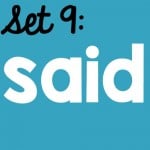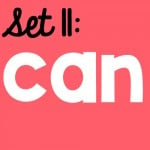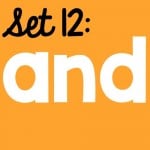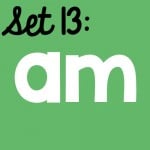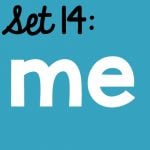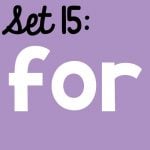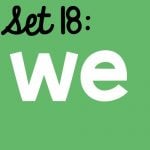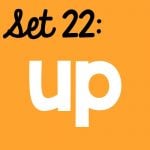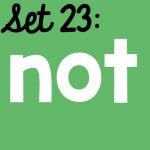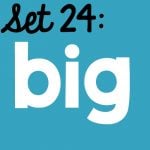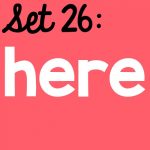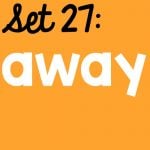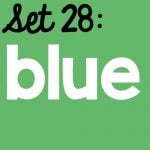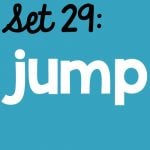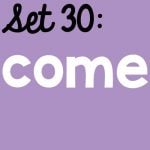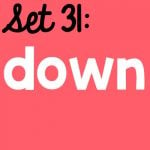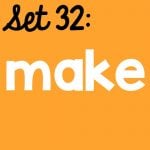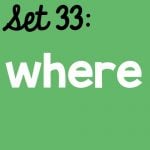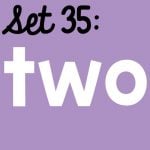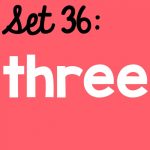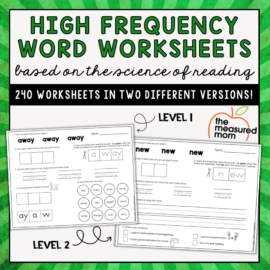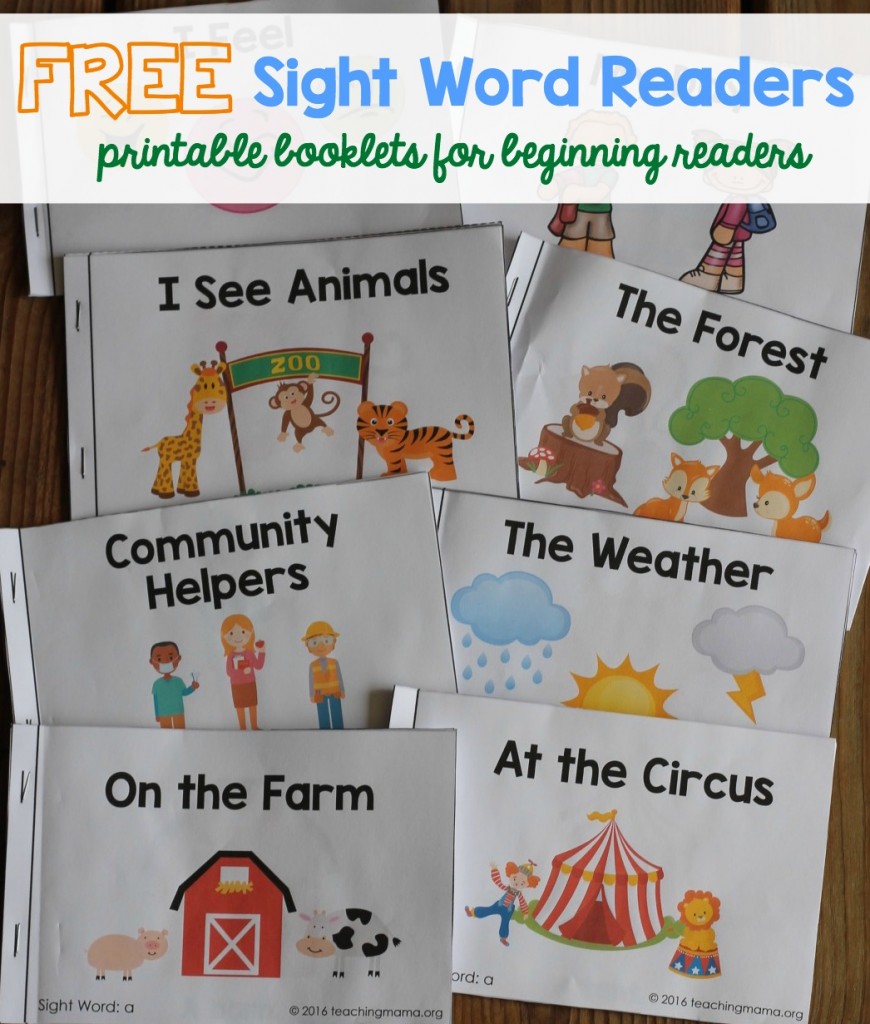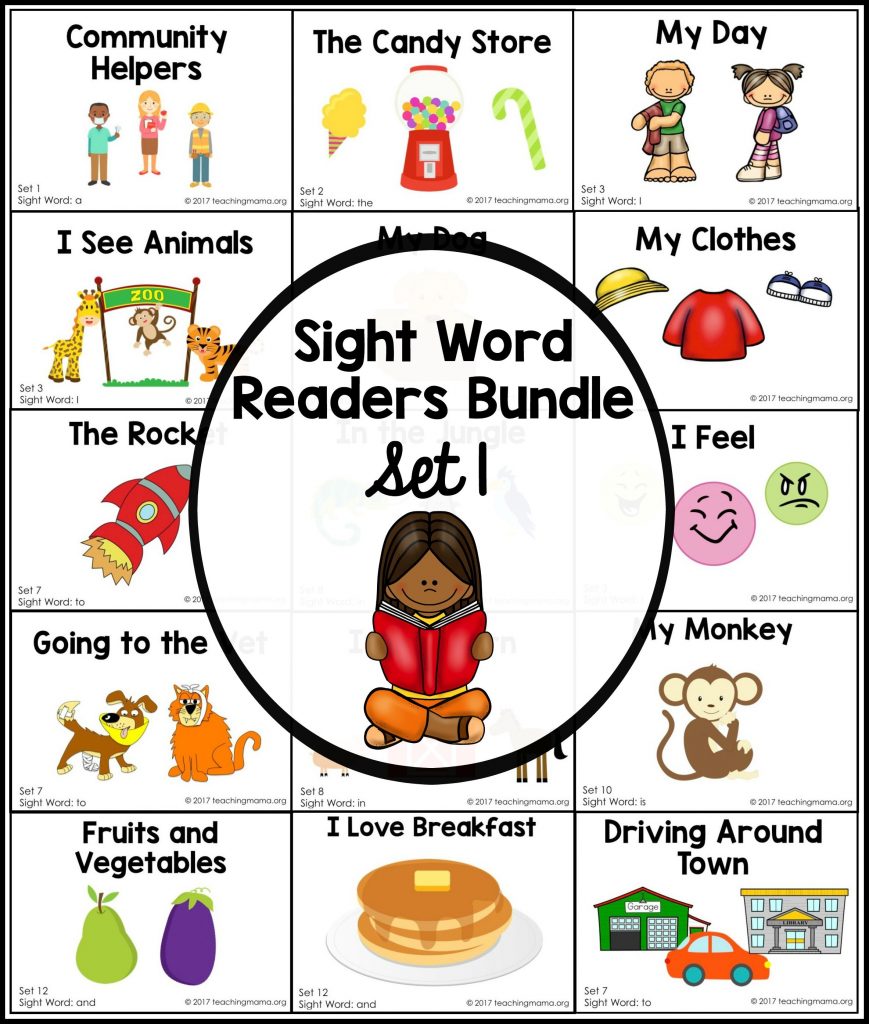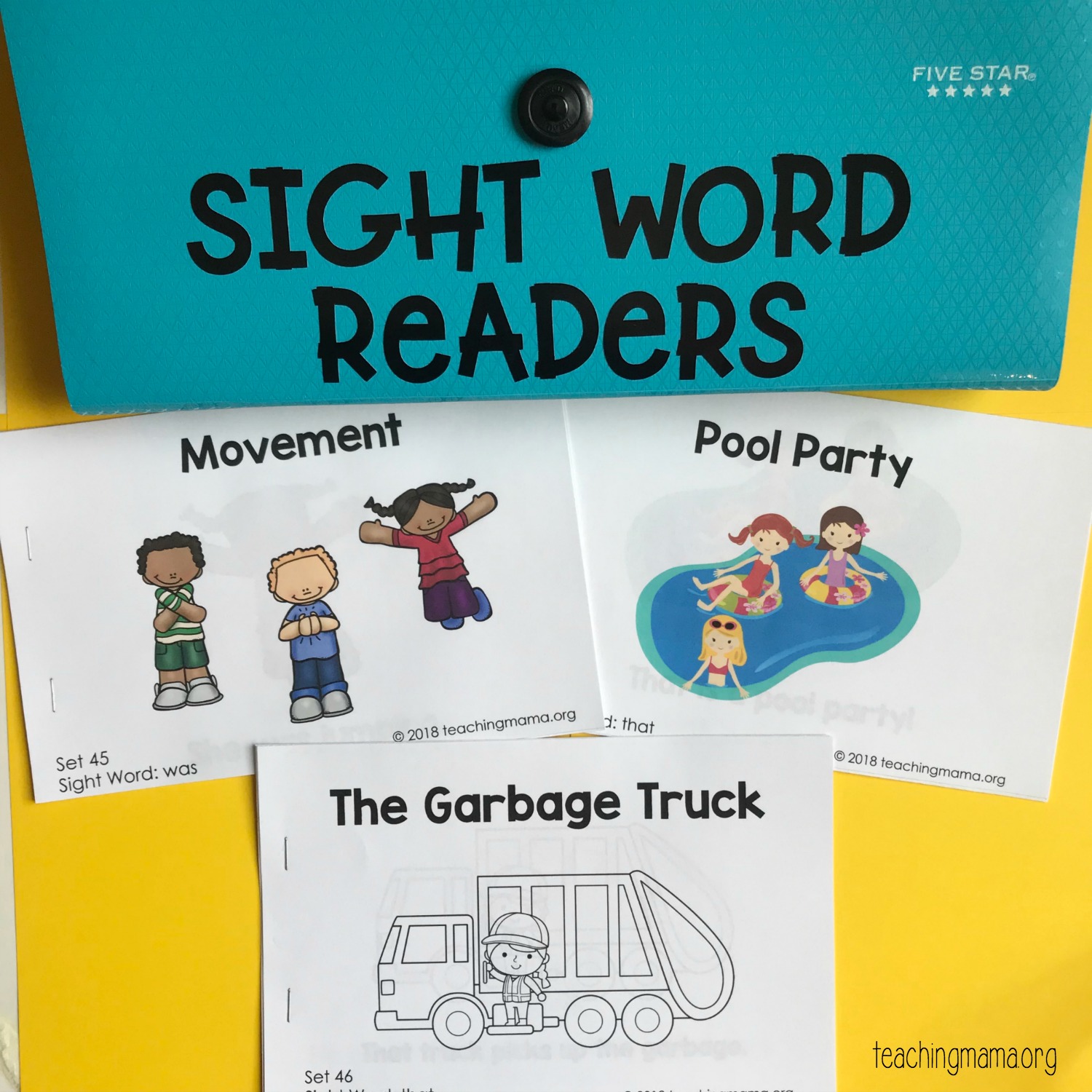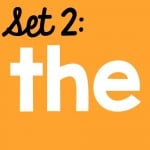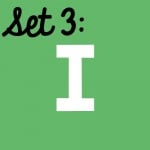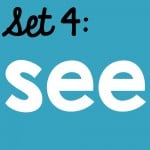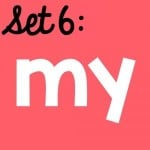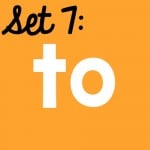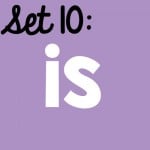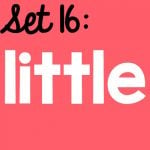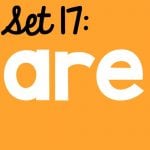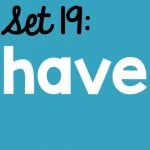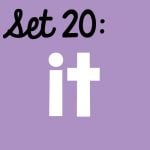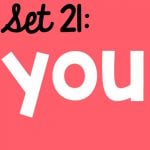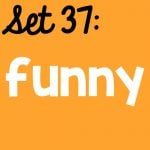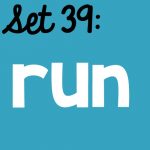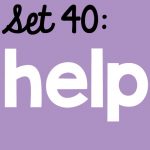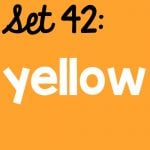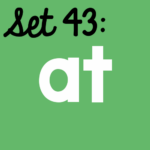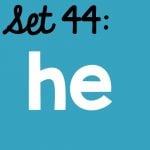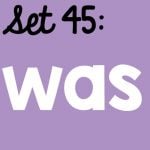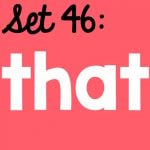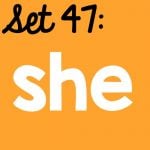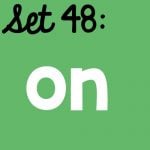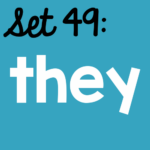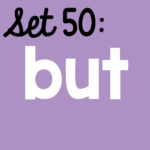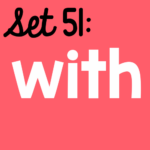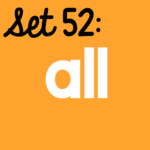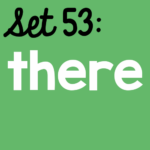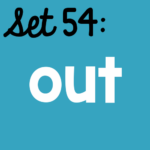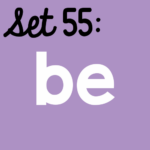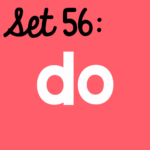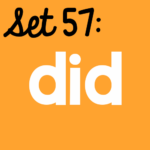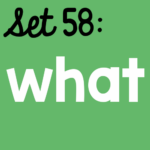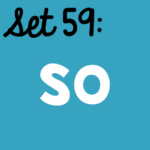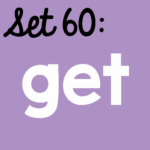This post contains affiliate links. As an Amazon Associate I earn from qualifying purchases.
Are you teaching sight words to young readers?
You’re in the right place!

In this post I’ll show you exactly how to teach sight words using hands-on lessons and free printable sight word books.
But first things first …
What ARE sight words, anyway?
It depends whom you ask.
When reading researchers use the term sight words, they’re referring to the words that a reader recognizes instantly, on sight.
Sight words can also refer to words that our readers encounter frequently when reading. That’s the definition I’ll be using here. We want our readers to know these words instantly as they work to become fluent readers.
It’s time to rethink how we teach sight words.
I used to think that when we teach sight words to young readers, we should teach them as whole words. This is why I used to share a collection of sight word books that taught the words through repeated exposure. (Those will soon disappear from the site and my shop.)
But research is telling us that this isn’t how the brain learns to read.
In order for kids’ brains to make new words a part of their permanent sight word vocabulary (the fancy word for this is orthographic mapping), they need to connect the sounds to the letters.
In other words? Sound it out.
Integrating high-frequency words into phonics lessons allows students to make sense of spelling patterns for these words. – readingrockets.org
I know what you’re thinking.
What about words that we CAN’T sound out?
We call attention to the parts of the word that are phonetic (and there’s usually at least 1-2 of them). Then we teach learners to learn the tricky parts by heart.
How to teach high frequency words to young learners
- First, know our goal here. Our goal is not to teach loads of sight words as whole words, because kids need to connect the sounds to letters when reading. Instead, our goal is to integrate sight word learning with phonics instruction.
- Next, we need to make sure our learners are ready to sound out words. Not sure? Check out this post.
- All set? Great. Name the new word, and have your learner repeat it.
- Name the individual phonemes (sounds) in the word. For example, in the word is, there are two phonemes: /i/ and /z/.
- Spell the sounds. Call attention to any unexpected spelling. In is, we spell /i/ with i and /z/ with s.
- If possible, have your learner read related words. Has and his are great words to read alongside is because they are short vowel words with an s that represents the the /z/ sound.
- Have your learner read connected text. Connected text can be decodable sentences or books.
Watch the video to see a sight word lesson in action …
Where can you find sight word lessons and decodable sight word books?
You’ll find a beginner’s collection below. Enjoy!
P.S. I look forward to adding more of these to our membership site, The Measured Mom Plus. I do not plan to add any more free books to this page. Learn more about membership here.
Sight word readers
SIGHT WORD WORKSHEETS THAT ALIGN WITH THE SCIENCE OF READING
Sight Word Worksheets – Based on the science of reading!
$15.00
Say goodbye to worksheets that simply keep kids busy. THESE worksheets help kids focus on the spellings of each individual sound … which is exactly what they need to master these high frequency words!
Check out the rest of our sight word series
Part 1 Part 2 Part 3 Part 4 Part 5 Part 6 Part 7 Part 8 Part 9
You May Also Enjoy These Posts:
Reader Interactions
Trackbacks
As a reading interventionist, I often meet kids that are behind in sight words. One student, Jesse, a first grader, didn’t know her sight words. She was stuck reading low level kindergarten books. At school, she was given a list of 100 words to memorize. She practiced them everyday. Yet, she didn’t retain them. It appeared that she was blind to sight words. I tried to find books to teach her sight words. I was unimpressed. Most sight word books are repetitive and teach kids to guess. In my free printable sight word books I made sure to incorporate:
-text that is not guessable
-fun animal facts to keep kids engaged
-a picture that is for fun (not to help the child guess)
-a few easy sight words like: the, many, they…etc.
-a few harder sight words like: enough, different, through…etc.
Many struggling readers have significant difficulties when learning sight words. In fact, dyslexic students can almost seem blind to them. Jesse, for example, had to review “they” across multiple lessons to retain the word. Struggling readers need systematic exposure (wherein they only learn 2-4 at a time) and books that allow them to practice. In this post, Reading Elephant offers two free printable sight word books.
In addition, Reading Elephant also offers systematic phonics books.
Printable sight word books…one is about lizards!
The first is a nonfiction book about lizards. Kids can learn fun facts, like how some lizards can walk on water, while learning new sight words. Jesse, like many kids, loved learning about animals. She was willing to reread nonfiction animal books because she wanted to memorize animal facts. Thus, I created some fun nonfiction animal books that help kids learn sight words. Click the following link for the first of the free printable sight word books:
Sight Words
In the above book, kids can practice the following sight words: from, some, are, other, they, two, your, great, most, very, have, through, many, their, water, where, do.
Does your student like lizards? If so, you can have fun quizzing them about sight words and lizards. This coupling can help kids cope with the boredom of rote memorization. Here are some fun animal facts and sight words to learn in the above story:
Question: How big are some lizards?
Answer: Lizards can be as big as two men (like Komodo dragons) or as small as the tip of your nose (like the Jaragua lizard).
Question: Why can some lizards push through water to swim?
Answer: They have strong tails.
Question: Where can lizards climb and why?
Answer: Lizards can climb on walls and trees. They have hairs on their feet that stick to things.
Next, your student can learn sight words and read about camels.
Printable sight word books…and the other is about camels!
A lack of sight word knowledge can leave a child stuck on low level books. To accelerate a struggling readers progress, expose her to sight words. In the following book, kids can learn sight words and fun facts about camels, like how they have thick lips that can tolerate the spikes on desert plants. Click the following link for the other of the free printable sight word books:
Sight Words
In the above book, kids can practice the following sight words: have, one, two, their, are, of, the, they, from, eyes, many, to, different, very, walk, sometimes, enough, water, does, another, would, you.
Again, to make memorizing sight words a bit more tolerable, you can quiz your student on fun camel facts at the same time. Write questions like the following on your board. Read the sentences out loud on your own. Then, pause at sight words. Have your student help you read the sight words:
Question: How many humps can a camel have?
Answer: Camels can have one or two humps.
Question: Why do they have many sets of eyelashes?
Answer: Camels have many sets of eyelashes to help shield their eyes from the sun.
Question: Why do camels have thick lips?
Answer: Camels have thick lips so they can eat many different plants in the desert like cacti.
Our decodable books include sight words. Enter our shop.
What are sight words?
Sight words break the phonetic code. They are words that deviate from the regularities in English. For example, “they” is a sight word. If “they” were spelled phonetically, we would write “thay.” Also, “would” is a sight word. If “would” were spelled phonetically, we’d write “wood.”
There are many sight words in English. In K-1, kids should memorize about 100-120 sight words. They should NOT memorize these words all at once. Rather, kids should learn sight words systematically, or a handful at a time. Reading Elephant recommends teaching 2-4 new sight words at a time. In the above free printable sight words books, kids can practice some of the most common sight words.
In the above free printable sight word books, there’s a student and teacher version. The teacher version has a list of sight words in each story. In addition, all of the sight words are underlined. That way, you as the teacher know how to cue the student. On sight words, don’t encourage sound-by-sound reading. On all other words, encourage sound-by-sound reading.
How to correct your student
When your student makes an error on a sight word, simply give her the word. It’s that simple. Since sight words break the phonetic code, these words cannot be read sound-by-sound.
Sight words are common. However, there are only about 100-120 sight words worth memorizing. Sight words like should, have, could, they…etc. are everywhere. They’re sprinkled throughout our written language, but there really aren’t many of them… consider that there are 100-120 sight words worth memorizing and over a quarter of a million words in English. Sight words are generally descended from Old English. Over time, we’ve changed their pronunciation. Our spelling system does not keep up with sound changes. Thus, sight words are a relic of history.
There are a few tricks you can use
Even sight words contain phonics. There are always a few sounds in sight words that are regular. Usually, the first and last sound can help the student unlock the word. For example, in “would” the /w/ and /d/ are regular. Tell the student it’s a sight word. Next, highlight the beginning and ending sounds. Give the student another try. If she still makes a mistake, simply give her the word…you don’t want to encourage guessing!
Instead, encourage methodical reading strategies. After the child 1) knows it’s a sight word, 2) sees the phonetic aspect of the sight word, then you can simply give her the word. Let the student move on with the story. Make a note of the word she missed.
Make notes of the missed sight words
Write down the sight words your student struggles with. Incorporate them in later instruction. Introduce each missed sight word in a sentence. Read the sentence aloud. Put the new sight word on a flashcard. Then, incorporate the sight word into reading and spelling activities.
I hope your student enjoys learning sight words and lizard/camel facts!
If you like the free printable sight word books in this post, please let me know in a comment below or an email. Thank you for reading!
Reading Elephant
Reading Elephant offers a printable phonics books library for struggling readers.
So many sight word books are available on the market for teaching emergent readers. Check out these tried and true sight word books and sets.

When kids first learn how to read, it’s important for them to learn sight words alongside phonics. Give kids these top sight word books to expand their knowledge!
FREE Sight Word Email Series
Sign up for the sight word email series filled with tips to get you started teaching sight words in the best ways, strategies for success, and FREE activities kids will love. Everything you need to build reading skills with sight words!
You may also enjoy these posts:
Reader Interactions

***Please note: this sight word sentences lessons book is set up in a quick to digest flash card format that helps kids instantly spell and read new words as they learn them.***
This ‘Sight Word Book Level 1: 100 Sight Words Book One’ starts at the beginning (where Naomie Webb’s ‘Kindergarten Sight Words Books’ leaves off) and teaches your grade school child sight words in the order of frequency.
The books in this ‘Kid’s Sight Words Book’ series has been broken down into levels (and with four individual books in each level) as educators have found that teaching only a few sight words at a time is the best way to increase the success rate of instant ‘sight word’ recognition.
A lovable penguin character named Pete, helps make the process of learning kids’ sight words fun.
Level 1 in Naomie Webb’s ‘Sight Word Book’ includes a total of four books with each book featuring 25 of the most frequent words children use in reading and writing. Each book in the series covers a different set of 25 sight words and sight word sentences.
By the time your child has mastered all four books in the ‘Sight Word Book Level 1’ book series; he or she will be a more confident beginner reader and ready for reading and writing in grades 1 to 3.
31 pages, Kindle Edition
First published January 2, 2013
About the author
Join the discussion
Can’t find what you’re looking for?
Get help and learn more about the design.
It is important for beginning readers to practice reading sight words. Sight words are word that are most frequently used and they appear on almost every page of text. These are also words that can’t necessarily be sounded out, so they need to be memorized. For example, if you sound out the word ‘the’ it would sound totally different than how it should be pronounced.
I wanted to help you as educators out, so I created sight word reader booklets for beginning readers. There are 42 altogether! They all are from the Pre-Primer Dolch Sight Word List (with 2 extra sight words added in). Each sight word contains 3 sets of printable booklets.
You can download the readers for free on the colored buttons below, or you can save time and buy them in a bundle HERE.
Printing Directions:
Print the pages on paper. (Page 1 is my Terms of Use.) You can also print the pages front and back. If you have troubles printing, make sure Adobe is up to date. You can download the most current version here.
After printing, cut out the pages and staple them together. Enjoy reading!
Click on the pictures below to take you to the sight word readers!
Pre-Primer-
